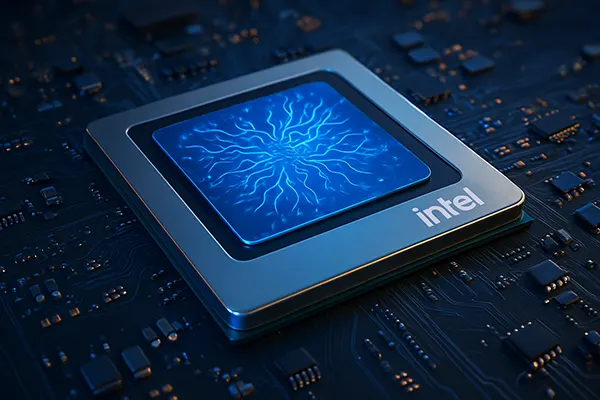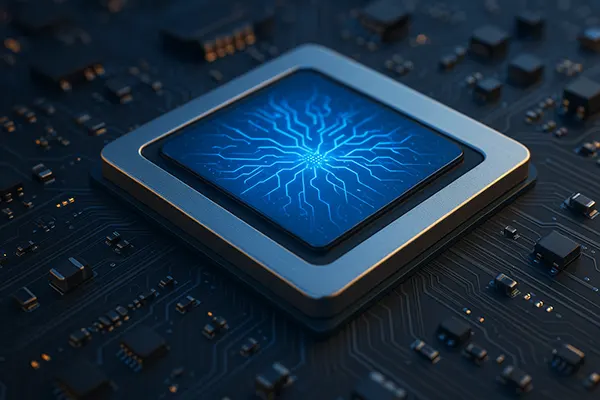
AI-Optimised Intel Lunar Lake Processors: What Changes for PC Users?
The upcoming Intel Lunar Lake processors, expected to launch in the second half of 2025, are designed from the ground up with artificial intelligence integration in mind. These chips promise a significant shift in how laptops and portable PCs handle AI tasks, reduce power consumption, and improve performance across the board. Built on a refined Intel 18A process node and featuring a brand-new architecture, Lunar Lake could reshape user expectations for battery life and computing responsiveness.
Architectural Leap with AI at the Core
Lunar Lake marks a fundamental departure from previous Intel designs, introducing an entirely new system-on-chip (SoC) layout. This includes a low-power island, new performance (P) and efficiency (E) cores, and an integrated NPU (Neural Processing Unit) built to accelerate AI workloads on-device. The platform is expected to support up to 40+ TOPS (trillions of operations per second), a significant improvement compared to Meteor Lake’s 10+ TOPS.
With AI-enhanced processing becoming central to everyday tasks – such as image upscaling, natural language processing, real-time translation, and more – Lunar Lake is Intel’s direct response to growing demand in consumer and professional segments alike. It will allow applications like Copilot in Windows 11 to run faster and more efficiently without depending heavily on cloud resources.
This redesign is made possible by Intel’s Foveros 3D packaging, allowing components like memory, compute dies, and GPUs to be stacked efficiently. By decoupling the CPU and GPU tiles, Intel can manufacture them separately and target specific nodes for optimisation, reducing energy use and enhancing thermal control.
What It Means for Laptop Users
Users can expect tangible improvements in real-world tasks, particularly those involving AI-enhanced services. Creative professionals using Adobe Photoshop, Premiere Pro, or generative tools will benefit from faster render times, better predictive capabilities, and smarter automation features.
Gamers, meanwhile, may not see massive gains in raw GPU performance, but power efficiency will matter more than ever. With integrated Xe2-LPG graphics, Lunar Lake is expected to support XeSS upscaling technology and improved ray tracing performance, giving ultraportable devices a graphics boost without needing a discrete GPU.
Students and office users will see longer battery life and snappier multitasking, thanks to better power gating and memory management. The AI engine can manage background tasks intelligently, freeing up resources for active work and reducing unnecessary load on the CPU.
Energy Efficiency and Battery Gains
One of the standout promises of Lunar Lake is drastically improved energy efficiency. Intel claims up to 60% better power efficiency compared to previous generations in certain scenarios. Much of this improvement stems from the leaner SoC design and more efficient scheduling between P-cores, E-cores, and the AI accelerator.
Power efficiency is also improved thanks to LPDDR5X memory integration directly onto the package (up to 32GB). This reduces latency and power draw, allowing for slimmer laptops with fewer compromises in performance. With memory being closer to the SoC, data transfer speeds increase while maintaining lower voltage requirements.
For mobile professionals, this means longer uptime – easily reaching 15+ hours of mixed usage in devices optimised for Lunar Lake. Intel is also working closely with OEM partners to ensure fanless and ultra-thin designs can fully leverage the low TDP (Thermal Design Power) of these chips.
Implications for PC Manufacturers
OEMs are already gearing up for the Lunar Lake shift, especially those producing ultra-thin laptops and tablets. With Qualcomm’s Snapdragon X Elite gaining attention, Intel’s Lunar Lake provides a strong x86-based alternative with tight Windows integration and broader software compatibility.
Manufacturers can deliver more premium experiences without increasing costs. Lunar Lake’s integrated AI capabilities allow them to eliminate the need for dedicated AI co-processors or bulky cooling systems in many scenarios, reducing design complexity and weight.
Expect brands like ASUS, Lenovo, Dell, and HP to lead the charge with early adopters of Lunar Lake in their premium and productivity-focused lines. Intel Evo certification is also likely to evolve to accommodate AI performance metrics as a standard requirement.

Future Outlook: A Catalyst for AI PCs
Lunar Lake isn’t just another CPU update; it’s part of Intel’s broader shift toward the AI PC paradigm. Microsoft and Intel have both signalled that AI-capable PCs will define the next generation of computing, and Lunar Lake is positioned to anchor that transition.
The chipset will ship with enhanced support for AI software stacks, including Intel’s OpenVINO and Windows ML. Developers will have access to improved APIs and hardware hooks to better offload AI tasks to the NPU, optimising performance and battery usage across the software ecosystem.
Moreover, the security enhancements – such as Intel’s Control-Flow Enforcement Technology (CET) and hardware-based threat detection – ensure that AI workloads are handled securely, protecting sensitive data and preventing misuse in local AI applications.
Lunar Lake in the Competitive Landscape
With Apple’s M3 chip and AMD’s Ryzen AI series advancing fast, Intel must stay competitive in performance-per-watt and AI processing. Lunar Lake appears to hit a balance between raw computing power and smart integration of dedicated AI hardware.
Its success will depend not only on specs but also on software support and real-world user experience. Intel’s collaboration with Microsoft ensures that features like Copilot, automatic video enhancements, and voice command recognition become core system features rather than optional tools.
As more PC tasks shift toward AI-enhanced models, users will feel the difference most in their daily workflows. Intel Lunar Lake positions itself not just as an upgrade — but as the backbone for the next generation of AI-powered personal computing.


